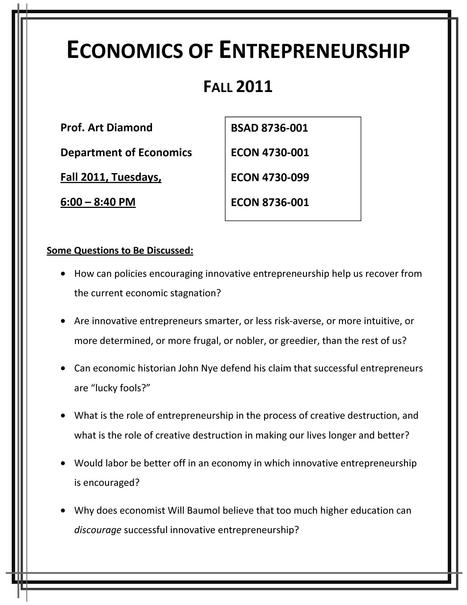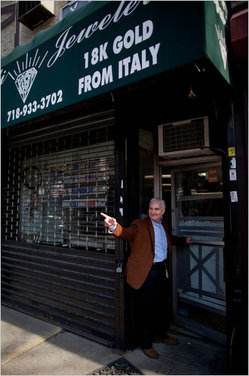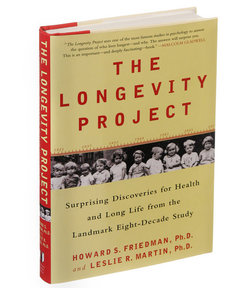As of 6/22/11, space is still available in the honors colloquium.
Chinese College Graduates Are Underemployed “Ant Tribe” in Big Cities
(p. A1) BEIJING — Liu Yang, a coal miner’s daughter, arrived in the capital this past summer with a freshly printed diploma from Datong University, $140 in her wallet and an air of invincibility.
Her first taste of reality came later the same day, as she lugged her bags through a ramshackle neighborhood, not far from the Olympic Village, where tens of thousands of other young strivers cram four to a room.
Unable to find a bed and unimpressed by the rabbit warren of slapdash buildings, Ms. Liu scowled as the smell of trash wafted up around her. “Beijing isn’t like this in the movies,” she said.
Often the first from their families to finish even high school, ambitious graduates like Ms. Liu are part of an unprecedented wave of young people all around China who were supposed to move the country’s labor-dependent economy toward a white-collar future. In 1998, when Jiang Zemin, then the president, announced plans to bolster higher education, Chinese universities and colleges produced (p. A12) 830,000 graduates a year. Last May, that number was more than six million and rising.
It is a remarkable achievement, yet for a government fixated on stability such figures are also a cause for concern. The economy, despite its robust growth, does not generate enough good professional jobs to absorb the influx of highly educated young adults. And many of them bear the inflated expectations of their parents, who emptied their bank accounts to buy them the good life that a higher education is presumed to guarantee.
“College essentially provided them with nothing,” said Zhang Ming, a political scientist and vocal critic of China’s education system. “For many young graduates, it’s all about survival. If there was ever an economic crisis, they could be a source of instability.”
. . .
Chinese sociologists have come up with a new term for educated young people who move in search of work like Ms. Liu: the ant tribe. It is a reference to their immense numbers — at least 100,000 in Beijing alone — and to the fact that they often settle into crowded neighborhoods, toiling for wages that would give even low-paid factory workers pause.
“Like ants, they gather in colonies, sometimes underground in basements, and work long and hard,” said Zhou Xiaozheng, a sociology professor at Renmin University in Beijing.
. . .
A fellow Datong University graduate, Yuan Lei, threw the first wet blanket over the exuberance of Ms. Liu, Mr. Li and three friends not long after their July arrival in Beijing. Mr. Yuan had arrived several months earlier for an internship but was still jobless.
“If you’re not the son of an official or you don’t come from money, life is going to be bitter,” he told them over bowls of 90-cent noodles, their first meal in the capital.
. . .
In the end, Mr. Li and his friends settled for sales jobs with an instant noodle company. The starting salary, a low $180 a month, turned out to be partly contingent on meeting ambitious sales figures. Wearing purple golf shirts with the words “Lao Yun Pickled Vegetable Beef Noodles,” they worked 12-hour days, returning home after dark to a meal of instant noodles.
. . .
Mr. Li worried aloud whether he would be able to marry his high school sweetheart, who had accompanied him here, if he could not earn enough money to buy a home. Such concerns are rampant among young Chinese men, who have been squeezed by skyrocketing real estate prices and a culture that demands that a groom provide an apartment for his bride. “I’m giving myself two years,” he said, his voice trailing off.
By November, the pressure had taken its toll on two of the others, including the irrepressible Liu Yang. After quitting the noodle company and finding no other job, she gave up and returned home.
For the full story, see:
ANDREW JACOBS. “China’s Army of Graduates Is Struggling.” The New York Times, First Section (Sun., December 12, 2010): A1 & A12.
(Note: ellipses added.)
(Note: the online version of the story is dated December 11, 2010 and has the title “China’s Army of Graduates Struggles for Jobs.”)
Diamond to Teach Economics of Entrepreneurship Seminar in Fall 2011
“The Century’s Most Daring and Iconic Building Was Entrusted to a Gardener”
(p. 10) . . . the risks were considerable and keenly felt, yet after only a few days of fretful hesitation the commissioners approved Paxton’s plan. Nothing–really, absolutely nothing–says more about Victorian Britain and its capacity for brilliance than that the century’s most daring and iconic building was entrusted to a gardener. Paxton’s Crystal Palace required no bricks at all–indeed, no mortar, no cement, no foundations. It was just bolted together and sat on the ground like a tent. This was not merely an (p. 11) ingenious solution to a monumental challenge but also a radical departure from anything that had ever been tried before.
Source:
Bryson, Bill. At Home: A Short History of Private Life. New York: Doubleday, 2010.
(Note: ellipsis added.)
Some New York Public School Teachers Still Well Paid to Do Busy Work
(p. A1) For her first assignment of the school year, Verona Gill, a $100,000-a-year special education teacher whom the city is trying to fire, sat around education offices in Lower Manhattan for two weeks, waiting to be told what to do.
For her second assignment, she was sent to a district office in the Bronx and told to hand out language exams to anyone who came to pick them up. Few did.
Now, Ms. Gill reports to a cubicle in Downtown Brooklyn with a broken computer and waits for it to be fixed. Periodically, her supervisor comes by to tell her she is still working on the problem. It has been this way since Oct. 8.
“I have no projects to do, so I sit there until 2:50 p.m. — that’s six hours and 50 minutes,” the official length of the teacher workday, she said. “And then I swipe out.”
When Mayor Michael R. Bloomberg closed the notorious reassignment centers known as rubber rooms this year, he and the city’s teachers’ union announced triumphantly that one of the most obvious sources of (p. A3) waste in the school system — $30 million a year in salaries being paid to educators caught up in the glacial legal process required to fire them — was no more.
No longer would hundreds of teachers accused of wrongdoing or incompetence, like Ms. Gill, clock in and out of trailers or windowless rooms for years, doing nothing more than snoozing or reading newspapers, griping or teaching one another tai chi. Instead, their cases would be sped up, and in the meantime they would be put to work.
While hundreds of teachers have had their cases resolved, for many of those still waiting, the definition of “work” has turned out to be a loose one. Some are now doing basic tasks, like light filing, paper-clipping, tracking down student information on a computer or using 25-foot tape measures to determine the dimensions of entire school buildings. Others sit without work in unadorned cubicles or at out-of-the-way conference tables.
For the full story, see:
SHARON OTTERMAN. “For New York, Teachers Still in Idle Limbo.” The New York Times (Weds., December 8, 2010): A1 & A3.
(Note: the online version of the commentary is dated December 7, 2010 and has the title “New York Teachers Still in Idle Limbo.”)
Moral: In a Crisis You Need Resilience and the Ability to Improvise More than You Need Detailed Advance Plans
(p. D1) When the Three Mile Island nuclear generating station along the Susquehanna River seemed on the verge of a full meltdown in March 1979, Gov. Richard L. Thornburgh of Pennsylvania asked a trusted aide to make sure that the evacuation plans for the surrounding counties would work.
The aide came back ashen faced. Dauphin County, on the eastern shore of the river, planned to send its populace west to safety over the Harvey Taylor Bridge.
“All well and good,” Mr. Thornburgh said in a recent speech, “except for the fact that Cumberland County on the west shore of the river had adopted an evacuation plan that would funnel all exiting traffic eastbound over — you guessed it — the same Harvey Taylor Bridge.”
. . .
(p. D4) Brian Wolshon, the director of the Gulf Coast Center for Evacuation and Transportation Resiliency, said that he was analyzing one county’s emergency plans that seemed to have every detail covered.“It was a wonderful report, with plans to move senior citizens out of care facilities and even out of hospitals, and they had signed contracts with bus and ambulance providers,” said Dr. Wolshon, who is also a professor at Louisiana State University. “But that same low-cost provider had the same contract with the county next door, and they had the capacity to evacuate only one of these counties.”
For the full story, see:
GARDINER HARRIS. “Dangers of Leaving No Resident Behind.” The New York Times (Tues., March 22, 2011): D1 & D4.
(Note: the online version of the article is dated March 21, 2011.)
Entrepreneur Defends His Store with Gun
“Anthony Spinelli, outside his store in the Bronx on Thursday, was called brave for shooting a man suspected of trying to rob his shop.” Source of caption and photo: online version of the NYT article quoted and cited below.
(p. A23) On Arthur Avenue, a group of men piled out of Pasquale’s Rigoletto restaurant onto the sidewalk to pay their respects to a sudden local hero.
“Anthony, we love you,” they shouted across the street.
They summed up the local sentiment about a man, Anthony Spinelli, celebrated for protecting his livelihood. On Wednesday, Mr. Spinelli pulled one of two licensed guns in the store, and shot one of the three people suspected of trying to rob his Arthur Avenue jewelry store at gunpoint.
The Bronx neighborhood seemed energized by the event, which people here saw as a testament to the toughness of one of the last Italian neighborhoods in New York City.
“You don’t come in and try to take a man’s livelihood,” said Nick Lousido, who called himself a neighborhood regular. “His family’s store has 50 years on this block, they’re going to come in and rob him?”
On Thursday, Mr. Spinelli, 49, had returned to his shop and sized up the broken front windows and the mess inside. He said that a man and woman had entered his store, and the man had held a gun to his head while the woman had gone through jewelry drawers and stuffed jewelry into a bag. He said he had feared for his life, and that he was still shaken.
. . .
Next door to Mr. Spinelli’s shop is M & M Painter Supplies, which has photographs of Pope John Paul II and Mother Teresa next to a paint color chart on the wall.
“He’s a very brave man,” said the store owner, Ernie Verino. “He had the gun, and it takes guts to use it.”
For the full story, see:
COREY KILGANNON. “Merchant Shooting to Defend His Store Is Celebrated as Hero of Arthur Avenue.” The New York Times (Fri., February 18, 2011): A23.
(Note: ellipsis added.)
(Note: the online version of the article is dated February 17, 2011 and has the title “After Shooting, Merchant Is Hero of Arthur Avenue.”)
Study Hard to Study Well
(p. D6) In a recent study published in the journal Cognition, psychologists at Princeton and Indiana University had 28 men and women read about three species of aliens, each of which had seven characteristics, like “has blue eyes,” and “eats flower petals and pollen.” Half the participants studied the text in 16-point Arial font, and the other half in 12-point Comic Sans MS or 12-point Bodoni MT, both of which are relatively unfamiliar and harder for the brain to process.
After a short break, the participants took an exam, and those who had studied in the harder-to-read fonts outperformed the others on the test, 85.5 percent to 72.8 percent, on average.
To test the approach in the classroom, the researchers conducted a large experiment involving 222 students at a public school in Chesterland, Ohio. One group had all its supplementary study materials, in English, history and science courses, reset in an unusual font, like Monotype Corsiva. The others studied as before. After the lessons were completed, the researchers evaluated the classes’ relevant tests and found that those students who’d been squinting at the stranger typefaces did significantly better than the others in all the classes — particularly in physics.
“The reason that the unusual fonts are effective is that it causes us to think more deeply about the material,” a co-author of the study, Daniel M. Oppenheimer, a psychologist at Princeton, wrote in an e-mail. “But we are capable of thinking deeply without being subjected to unusual fonts. Think of it this way, you can’t skim material in a hard to read font, so putting text in a hard-to-read font will force you to read more carefully.”
Then again, so will raw effort, he and other researchers said. Concentrating harder. Making outlines from scratch. Working through problem sets without glancing at the answers. And studying with classmates who test one another.
For the full story, see:
BENEDICT CAREY. “MIND; Come On, I Thought I Knew That!” The New York Times (Tues., April 19, 2011): D5-D6.
(Note: the online version of the article is dated April 18, 2011.)
The forthcoming article that is discussed in the quotes above, is:
Diemand-Yauman, Connor, Daniel M. Oppenheimer, and Erikka B. Vaughan. “Fortune Favors the Bold (and the Italicized): Effects of Disfluency on Educational Outcomes.” Cognition (2010).
With Wit and Wisdom Bryson Shows How Home Life Has Improved

Source of book image: http://img2.timeinc.net/ew/dynamic/imgs/101027/1127-EW-Must-List/at-home_300.jpg
Bill Bryson is best known for his witty travelogues. In recent years he has become more ambitious, venturing into the history of science, and now the history of domestic life. He is a keen observer with eyes open to the unexpected, the important and the droll. His latest book, At Home, contains much evidence and some useful analysis of how ordinary life has improved in western societies in the past couple of hundred years.
In the next several weeks, I plan to quote a few of the more illuminating passages from the book.
The Bryson book:
Bryson, Bill. At Home: A Short History of Private Life. New York: Doubleday, 2010.
“Big Money Is Dumb Money”
“Other People’s Money” is a short story that appears in Cory Doctorow’s short story collection With a Little Help.
(p. C7) Venture capitalists? Forget them, says “Other People’s Money.” Big money is dumb money. Much easier, says one old-lady manufacturer to a smart young gigafund manager, for her to make and market her own product, and keep the money (just like Mr. Doctorow), than for him to find and fund a hundred products and take a rake-off. He only deals in six-figure multiples, and that’s no good: not nimble enough. And he has to get a return on all those billions, poor outdated soul.
For the full review, see:
TOM SHIPPEY. “The Author as Agent of Change; Cory Doctorow has big ideas about the future of technology–and how it can empower writers.” The New York Times (Sat., MAY 21, 2011): C7.
The book of short stories is:
Doctorow, Cory. With a Little Help.
The Secret to a Long Life Is Conscientiousness
Source of book image: online version of the NYT review quoted and cited below.
(p. D3) Cheerfulness, optimism, extroversion and sociability may make life more enjoyable, but they won’t necessarily extend it, Howard S. Friedman and Leslie R. Martin found in a study that covered eight decades. The key traits are prudence and persistence. “The findings clearly revealed that the best childhood personality predictor of longevity was conscientiousness,” they write, “the qualities of a prudent, persistent, well-organized person, like a scientist-professor — somewhat obsessive and not at all carefree.”
. . .
There are three explanations for the dominant role of conscientiousness. The first and most obvious is that conscientious people are more likely to live healthy lifestyles, to not smoke or drink to excess, wear seat belts, follow doctors’ orders and take medication as prescribed. Second, conscientious people tend to find themselves not only in healthier situations but also in healthier relationships: happier marriages, better friendships, healthier work situations.
The third explanation for the link between conscientiousness and longevity is the most intriguing. “We thought it must be something biological,” Dr. Friedman said. “We ruled out every other factor.” He and other researchers found that some people are biologically predisposed to be not only more conscientiousness but also healthier. “Not only do they tend to avoid violent deaths and illnesses linked to smoking and drinking,” they write, “but conscientious individuals are less prone to a whole host of diseases, not just those caused by dangerous habits.” The precise physiological explanation is unknown but seems to have to do with levels of chemicals like serotonin in the brain.
As for optimism, it has its downside. “If you’re cheerful, very optimistic, especially in the face of illness and recovery, if you don’t consider the possibility that you might have setbacks, then those setbacks are harder to deal with,” Dr. Martin said. “If you’re one of those people who think everything’s fine — ‘no need to back up those computer files’ — the stress of failure, because you haven’t been more careful, is harmful. You almost set yourself up for more problems.”
For the full review, see:
KATHERINE BOUTO. “BOOKS ON SCIENCE; Eighty Years Along, a Longevity Study Still Has Ground to Cover.” The New York Times (Tues., April 19, 2011): D3.
(Note: ellipsis added.)
(Note: the online version of the article is dated April 18, 2011.)
The book under review is:
Friedman, Howard S., and Leslie R. Martin. The Longevity Project: Surprising Discoveries for Health and Long Life from the Landmark Eight-Decade Study. New York: Hudson Street Press, 2011.





